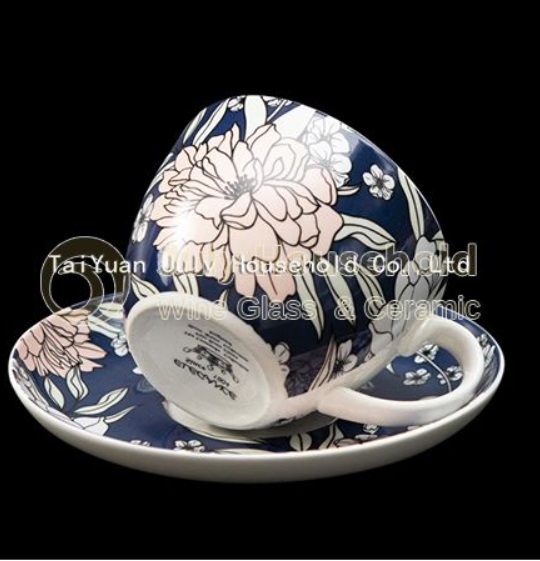Who invented the cigarette filter?
In 1925, Hungarian inventor Boris Aivaz patented the process of making a cigarette filter from crepe paper. Its purpose was to filter the fine flakes of tobacco in the rolled cigarette that often flecked off on the tongue.
This was objectionable to women who had begun to smoke. Companies added beauty tips, often made of cork, for the sake of, or sale to, women. They promoted smoking to women as a sign of liberation and independence.
It wasn’t until the 1950s that research linked smoking with lung cancer. In response, American cigarette companies spent millions of dollars to engineer a filter to reduce the health hazards of smoking.
They developed synthetic fibers in cigarette mouthpieces, but these created new problems. In 1952, the Kent Micronite introduced a filter that sucked particles out of the smoke, but the Micronite held asbestos fibers that were far more dangerous than tobacco smoke.
Philip Morris promised that an antifreeze chemical (diethylene glycol) in the mouthpiece would take “the fear out of smoking,” but the mouthpieces shed tiny fibers that could be inhaled into the lungs. The industry called it “fallout.” DuPont scientists experimented with Dacron, the same polyester that allowed for wrinkle-free pantsuits.
In 1953, a Reynolds Tobacco Company chemist, Claude Teague, invented a filter that could turn brown when exposed to smoke. It was introduced as Winston in 1954, the first successfully marketed filter cigarette.
It was followed in 1956 by Salem, the first filter-tipped menthol cigarette. The Belair menthol brand was launched nationally in 1960.
By the mid-60s, scientists realized that any material that effectively trapped particles also weakened the cigarette’s kick. The filter was designed to remove exactly what the smoker wanted from smoking.
Ultimately, the industry settled on filters being perceived by consumers as effective. They opted for the illusion that Teague’s filter was filtering (turning brown), despite the reality that filters do not make cigarettes any safer.
Filter cigarettes’ market share climbed from 0.5% in 1950 to more than 98% today. Filters are usually made from plastic cellulose acetate fiber, derived from bleached cotton or wood pulp treated with acetic acid and other chemicals.
Today filter ventilation is used to dilute the smoke. Ventilation holes vary in size and quantity, thus impacting the ease of inhaling smoke. Modifications in filter ventilation have created light and ultra-light cigarettes.
Other additives to filters include flavors (menthol), sweeteners, softeners (triacetin), flame retardants, breakable capsules releasing flavors on demand, and agents that will color the tobacco smoke.
On an environmental note, the cellulose acetate used in cigarette filters will eventually break down but never disappears. These plastic filters, containing toxic chemicals once smoked, are the most littered item in the world. They release their chemicals into the air, soil, and water and do not biodegrade for years.
Worldwide, every year, roughly 4.5 trillion cigarette butts are discarded, leading to over a billion pounds of toxic trash, according to American Nonsmokers’ Rights. Three-quarters of smokers report disposing of butts on the ground or out of a car window, making cigarette butts nearly 38% of all litter. Wow.
Further reading:
Biohazard Glass Lock-N-Load Hollow Point Glass Tips 50pk
Car Plastic — 4 Varieties Used In The Automotive Industry
INDUSTRIAL NETTING SELECTOR GUIDE
What is a knotted net?
.NET Windows Forms in a Nutshell [Book]
Introduction to .NET Framework
Ultimate Guide to the Best Clothesline Types
Doris Montag is a homespun historian and an exhibit curator who researches and displays historical collections of ordinary things, such as can openers, crochet, toy sewing machines, hand corn planters, powder compacts, egg cartons, and more. Contact or follow her on Facebook, HistoryofOrdinaryThings.
2
The Changing Cigarette
New Oversight of Tobacco Products
On June 22, 2009, President Barack Obama signed into law the Family Smoking Prevention and Tobacco Control Act (Public Law 111-31). The Tobacco Control Act grants the U.S. Food and Drug Administration (FDA) the authority to regulate tobacco products to protect the public’s health and recognizes FDA as the primary federal regulatory authority with respect to the manufacture, marketing, and distribution of tobacco products. Key elements of the act include, among other things, creation of a new Center for Tobacco Products, prohibition of the sale of cigarettes containing certain characterizing flavors, the requirement that manufacturers and importers report to FDA the ingredients and additives in their products, strengthened warning labels with graphic images of the adverse effects of cigarette use, and oversight of the tobacco industry’s efforts to develop and market potential reduced-exposure tobacco products. The Tobacco Control Act also requires FDA to reissue the agency’s 1996 regulation aimed at reducing young people’s access to tobacco products and curbing the appeal of tobacco to the young. Although some provisions of the act went into effect shortly after the statute was enacted, such as the ban on flavored cigarettes, others will be implemented over time.
Sections 910 and 911 of the Tobacco Control Act provide that premarket review of certain tobacco products by FDA is required before the products may be marketed. Section 910 requires manufacturers of new tobacco products (those not commercially marketed as of February 15, 2007, or modified after that date) to submit an application containing specified manufacturing and ingredient information, as well as studies of the product’s health risks, for FDA review. After reviewing the application, the agency will issue an order either permitting the product to be marketed or denying its marketing according to specified bases for its action. New tobacco products determined by FDA to be substantially equivalent to products already on the market as of February 15, 2007, are not required to undergo premarket review.
Section 911 provides that “modified risk tobacco products” may only be marketed if FDA determines, after reviewing a product application, that the product will significantly reduce the risk of tobacco-related disease to individual users, and benefit the health of the population as a whole, taking into account the impact on both users and nonusers of tobacco products. Section 911 recognizes so-called special rule products, which also require pre-market approval. Such products may be marketed for up to five years (subject to renewal) if the agency determines that the applicant has met specified criteria, the applicant agrees to conduct certain postmarket surveillance and studies, and other specified findings regarding the relative harm of the product are made. Under this section, FDA must issue guidance or regulations on the scientific evidence required for the assessment and ongoing review of modified-risk tobacco products in consultation with IOM.
Summary
To reduce smoking-attributable death and disease, public health efforts since the 1964 Surgeon General’s report on smoking and health have focused on reducing the prevalence of tobacco use. Reduced prevalence has been achieved through efforts to prevent tobacco use and promote cessation; this effort has been termed one of the “ten great public health achievements of the twentieth century” (CDC 1999). At the time the adverse effects of smoking were being recognized, the tobacco industry developed cigarettes with low machine-measured yields of tar and nicotine, and public health authorities encouraged consumers to select them (Peeler 1996; Shopland 2001). Unfortunately, it took public health researchers and federal authorities many years to discover what the tobacco industry knew much earlier: the health benefits of reductions of tar and nicotine intakes were negligible at best for persons using these products (Federal Register 1995, 1996; NCI 2001; WHO 2001; U.S. v. Philip Morris No. 449 F. Supp. 2d 1, 430–75 [D.D.C. 2006]). In 2001, an NCI report concluded: “There is no convincing evidence that changes in cigarette design between 1950 and the mid 1980s have resulted in an important decrease in the disease burden caused by cigarette use either for smokers as a group or for the entire population” (NCI 2001, p. 146). Thus, by the twenty-first century, it was apparent that five decades of evolving cigarette design had not reduced overall disease risk among smokers, and new designs were used by the tobacco industry as a tool to undermine prevention and cessation efforts (NCI 2001; Stratton et al. 2001; WHO 2001, 2003a,b,c; USDHHS 2004).
Similarly, informative and comprehensive scientific evaluations do not exist for any of the other new products developed ostensibly to reduce toxicants in cigarette smoke. This lack of data limits any conclusions that can be drawn about potential health risks or benefits.
The well-documented risks of cigarette design changes must be weighed against any potential benefits (Stratton et al. 2001). As this chapter makes clear, substantial risks may be associated with new tobacco products: (1) smokers who might have otherwise stopped smoking may continue to smoke because of perceived reduction in risk with use of new products; (2) former smokers may resume smoking because of perceived reduction in risk with use of new products; and (3) nonsmokers, particularly youth, may start to use new products because of their perceived safety. The theoretical benefit of cigarette design changes is to reduce exposure to toxicants sufficiently to reduce the risk of disease and death. However, if these products are used by persons otherwise unlikely to use a tobacco product, which would undermine efforts to prevent tobacco use, or if the products delay cessation among persons who would otherwise stop using tobacco, the overall health of the population would be harmed.
There is little doubt that new tobacco products will continue to be developed. Consequently, there is a critical need to conduct independent research on the design, composition, and health effects of new cigarette products and to put in place a comprehensive surveillance system to understand consumers’ knowledge, attitudes, and behaviors regarding these products.
Conclusions
The evidence indicates that changing cigarette designs over the last five decades, including filtered, low-tar, and “light” variations, have not reduced overall disease risk among smokers and may have hindered prevention and cessation efforts.
There is insufficient evidence to determine whether novel tobacco products reduce individual and population health risks.
The overall health of the public could be harmed if the introduction of novel tobacco products encourages tobacco use among people who would otherwise be unlikely to use a tobacco product or delays cessation among persons who would otherwise quit using tobacco altogether.
Who invented the cigarette filter?
The Changing Cigarette
Further reading:Amazon.com: Comfy Package [100 Sets] 16 oz. Clear Plastic Cups With Flat Lids : Home & Kitchen
How to Cook Rice in a Rice Cooker (with Pictures)
Enhancing Outdoor Maintenance with Garden Power Tools
Exploring the Benefits of LED Lighted Bathroom Mirrors
Champagne Flute vs. Coupe: Which Glassware Reigns Supreme?
Choosing the Perfect Braided Rug for Your Space
The Benefits of Plastic Flower Pots: Why They Are a Popular Choice











